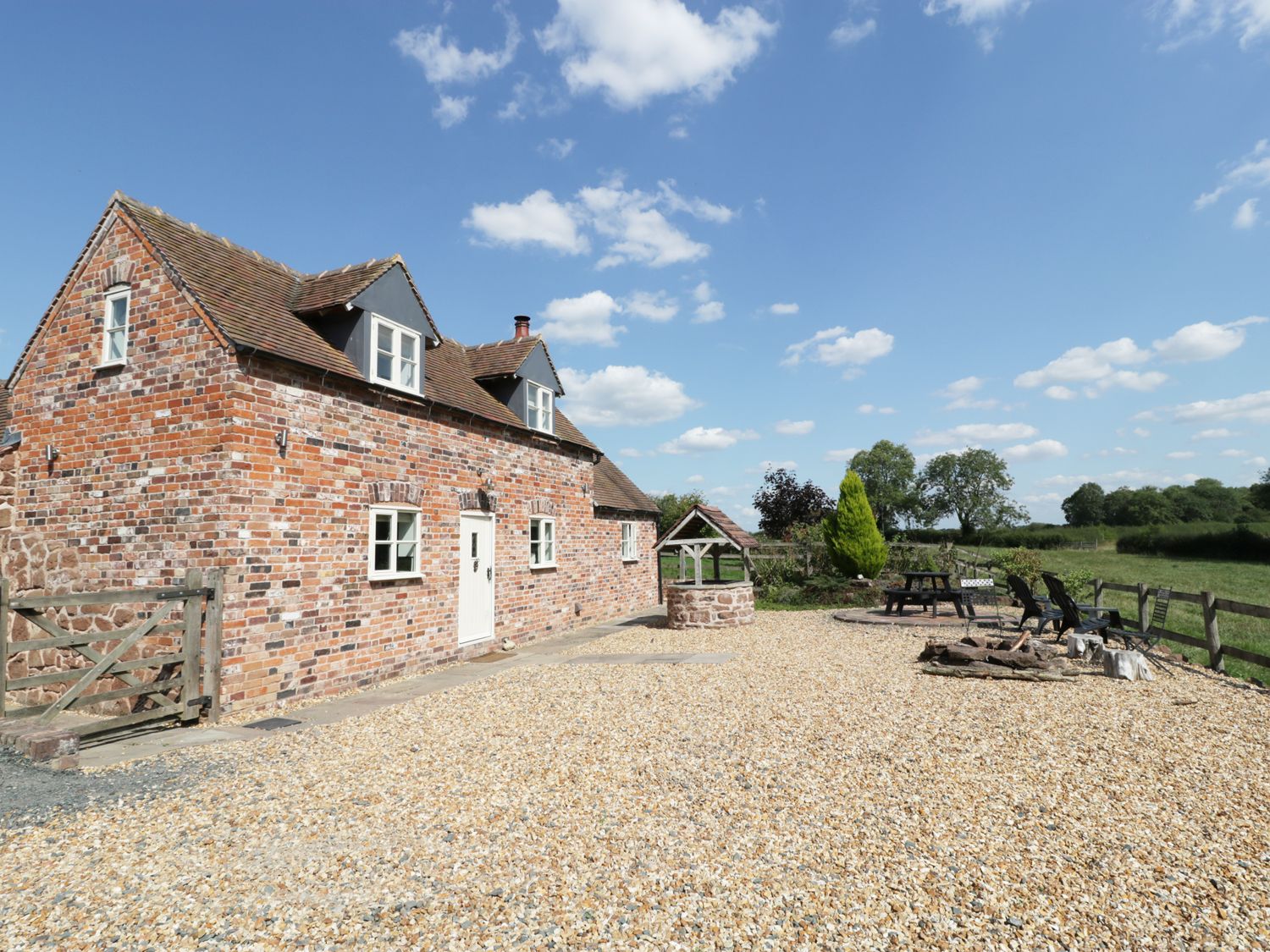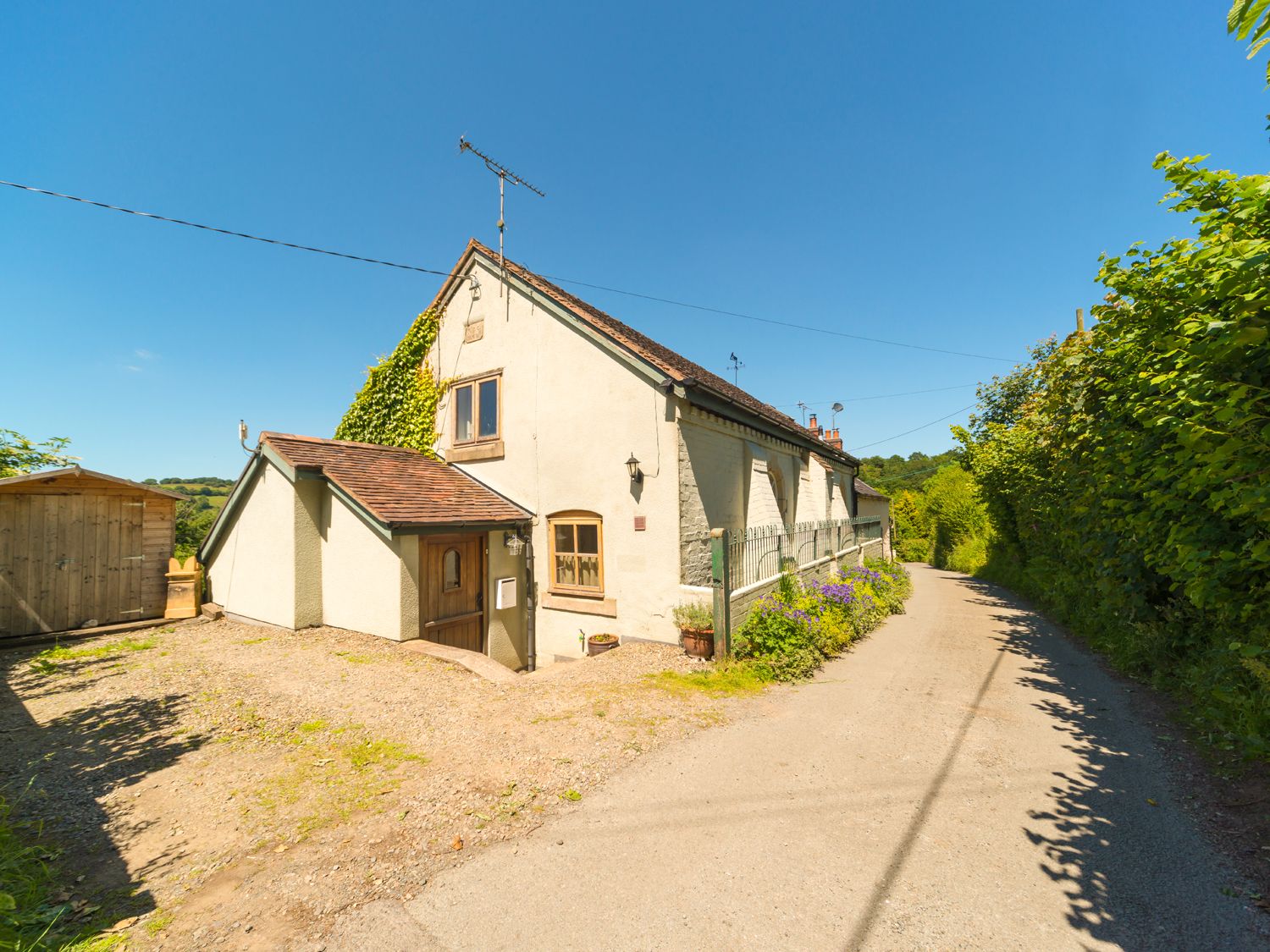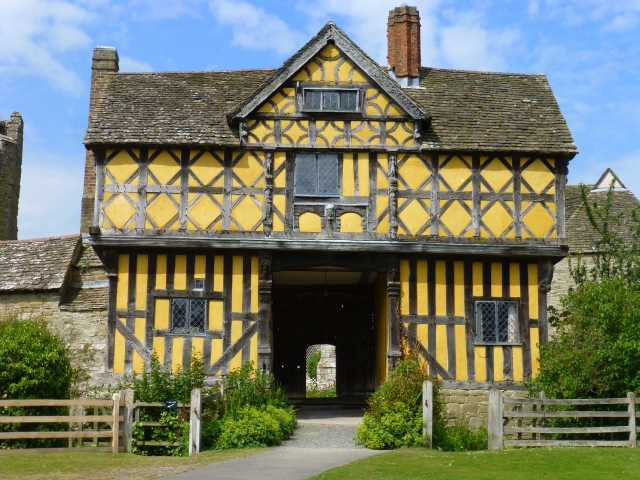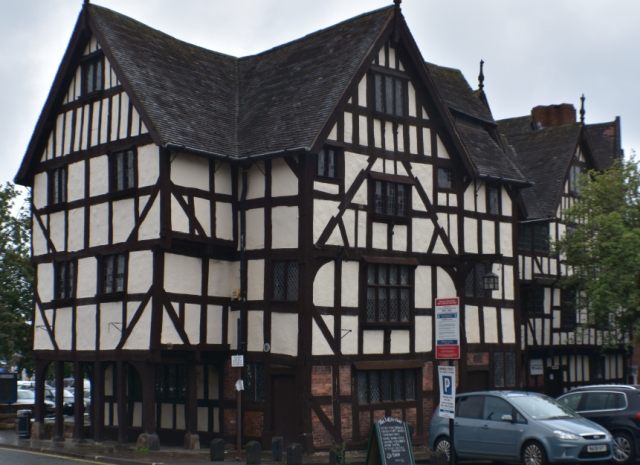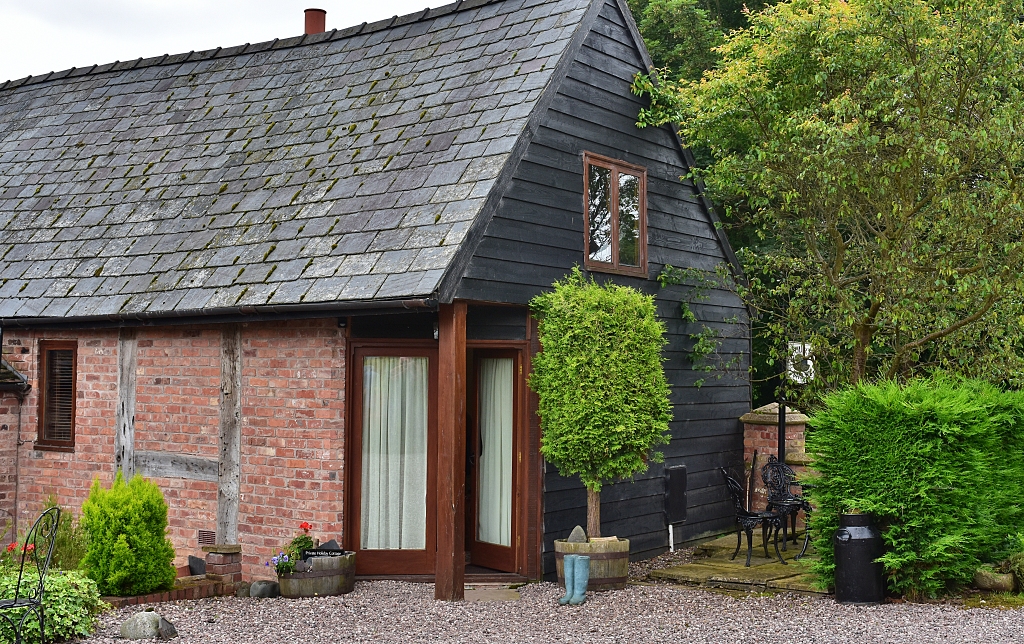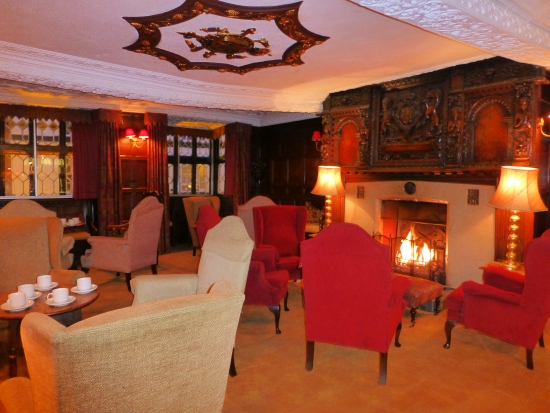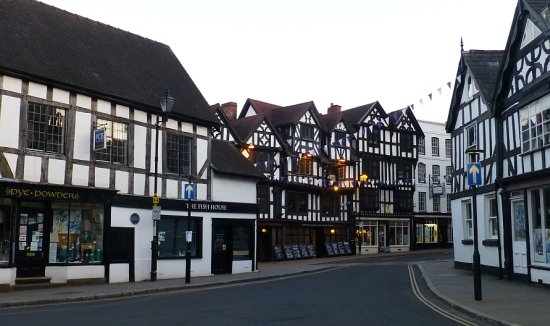Ludlow
History and Food Combined
Ludlow is a beautiful medieval market town
nestled in a curve of the River Teme in southern Shropshire.
The town centre is dominated by the ruined Norman castle and is overlooked by
Shropshire’s largest parish church, St. Laurence’s, also known as the cathedral
of the Marches.
With over 500 listed buildings, this is a town full of history and is well
worth exploring. If you require further reason for visiting, then Ludlow has gained a fine
reputation for high quality food and drink and has many highly acclaimed
eateries.
And, if after testing the local food and drink you need some fresh air and exercise Ludlow is surrounded by glorious countryside in which you could stretch your legs. So, if you like the essentially-england.com mix of good food and history, then Ludlow would make a great place to stay whilst discovering Shropshire, Herefordshire or the Welsh Marches.
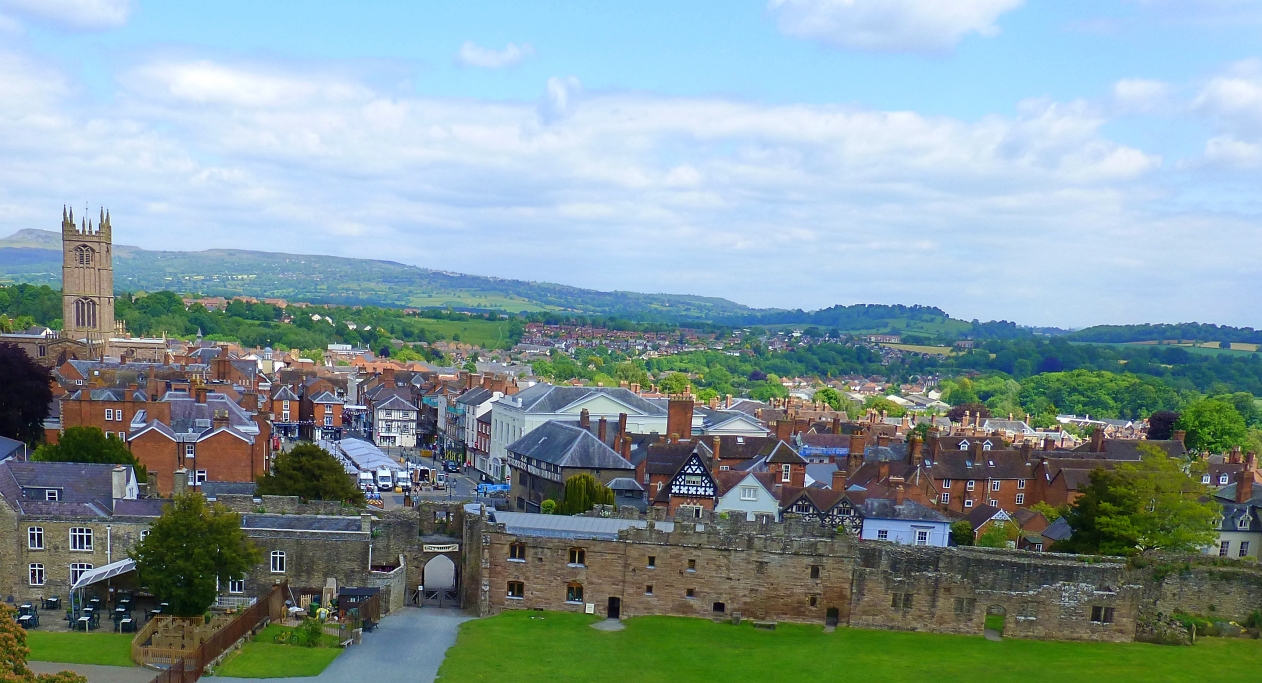 Medieval Town Centre Viewed from the Castle © essentially-england.com
Medieval Town Centre Viewed from the Castle © essentially-england.com
Ludlow
There wasn’t a Ludlow at the time of the Norman invasion of 1066. The current position was just a hill top with maybe a small burial mound and a small hill fort. The first settlement was probably Anglo Saxon Dinham, after “din” the Welsh for hill fort and “ham” meaning settlement. The area still exists today and extends from the current town centre down to the River Teme. Ludlow was not even mentioned in the Domesday Book survey of 1086, although the area was part of the large manor of Stanton, who’s Lord was Walter de Lacy a supporter of William the Conqueror.
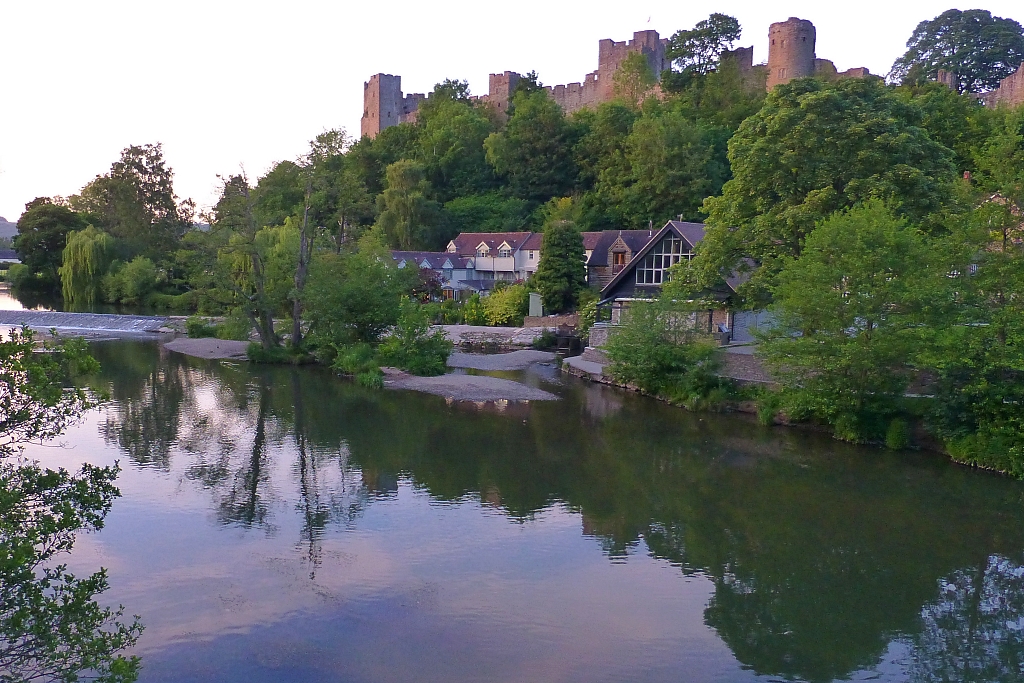 The Mill Area and Castle as the Sun Starts to Set © essentially-england.com
The Mill Area and Castle as the Sun Starts to Set © essentially-england.comIt was Roger de Lacy, Walter’s son, who started to build a castle here in the late eleventh century as part of a planned Norman town. Initially the castle was called Dinham Castle, but by 1138 the town name became Lodelowe, from the Old English “hlud-hlaw” meaning the loud waters by the hill. At the time the section of the River Teme around the town contained noisy rapids!
Ludlow Castle was an important defence in the border lands between England and Wales, an area named the Welsh Marches. Shortly after the Norman invasion King William gave these lands to trusted supporters and allowed them to build castles and rule their own territories. These were the Marcher Lords, and they built many castles along the length of the border to demonstrate their power and intimidate the unruly Welsh.
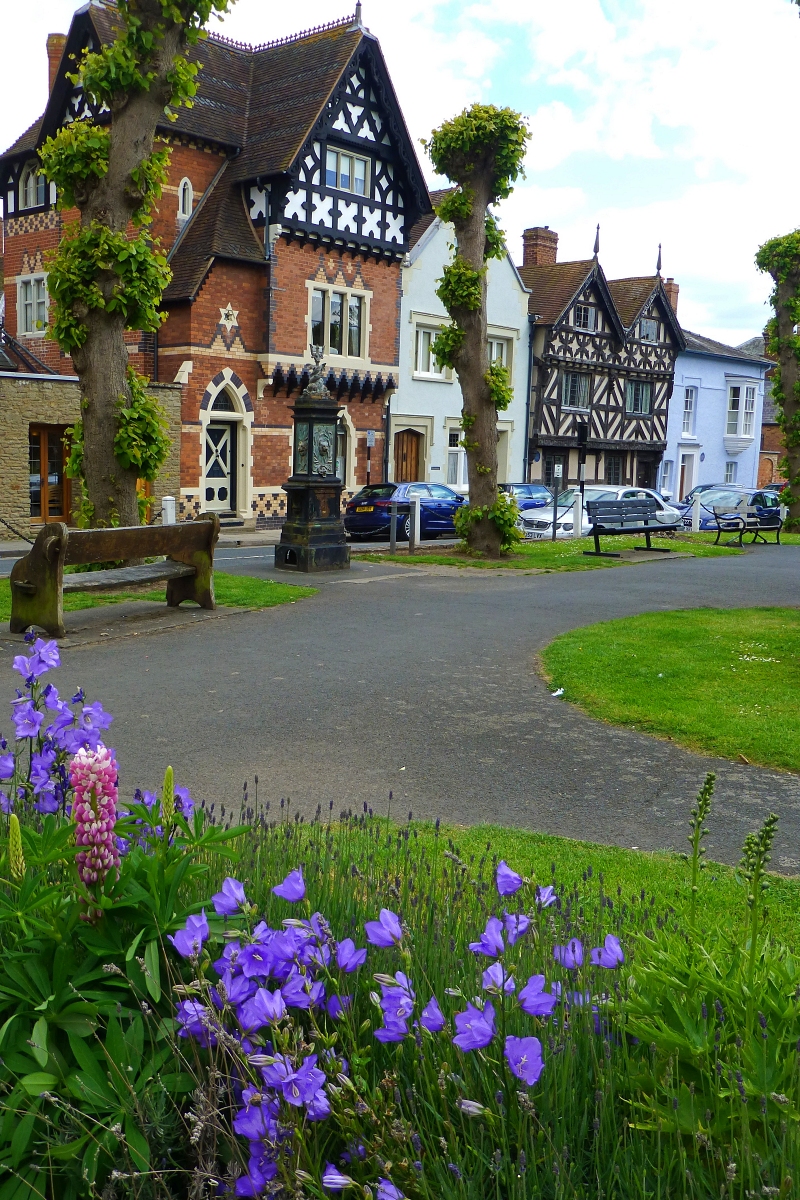 Castle Square © essentially-england.com
Castle Square © essentially-england.comThe town developed and around the mid thirteenth century a town wall was built, parts of which are still standing including Broadgate, one of the seven entrances into the town. The market grew in stature and the wool trade and animal stock generated wealth. The rich merchants spent their money on extending the church and building new half timbered houses, many of which still exist today.
Between 1472 and 1689 Ludlow had the strange tag of ‘Capital of Wales’ as the Council of the Marches, who governed Wales, was run from the castle during this period.
Into the Georgian period and Ludlow had become a ‘trendy’ town with a ‘social season’. New housing was built, mainly along Broad Street, leading to it being called one of the finest streets in England.
The Victorians brought the railway and manufacturing, glove making being one of the more successful businesses.
After a bit of a lull, Ludlow re-invented itself as an exciting market town that has developed a real passion for good food and holds many large festivals and fayres throughout the year. Also, luckily for history and architecture lovers, they realised that they had an abundance of fine buildings and streets and have protected the centre of town from over development.
To put you in the frame of mind on what Ludlow is all about I’ve come across several sources of this lovely poem by Staffordshire artist and hobby poet John Creber.
Ludlow
I love those crumbling castle walls,
The old half-timbered shops and halls,
And how the streets go tumbling down
To riverbanks around the town.
The festivals, the market square,
The Medieval Christmas Fayre.
I love those lazy long weekends -
Good company, good food - good friends.
©John Creber
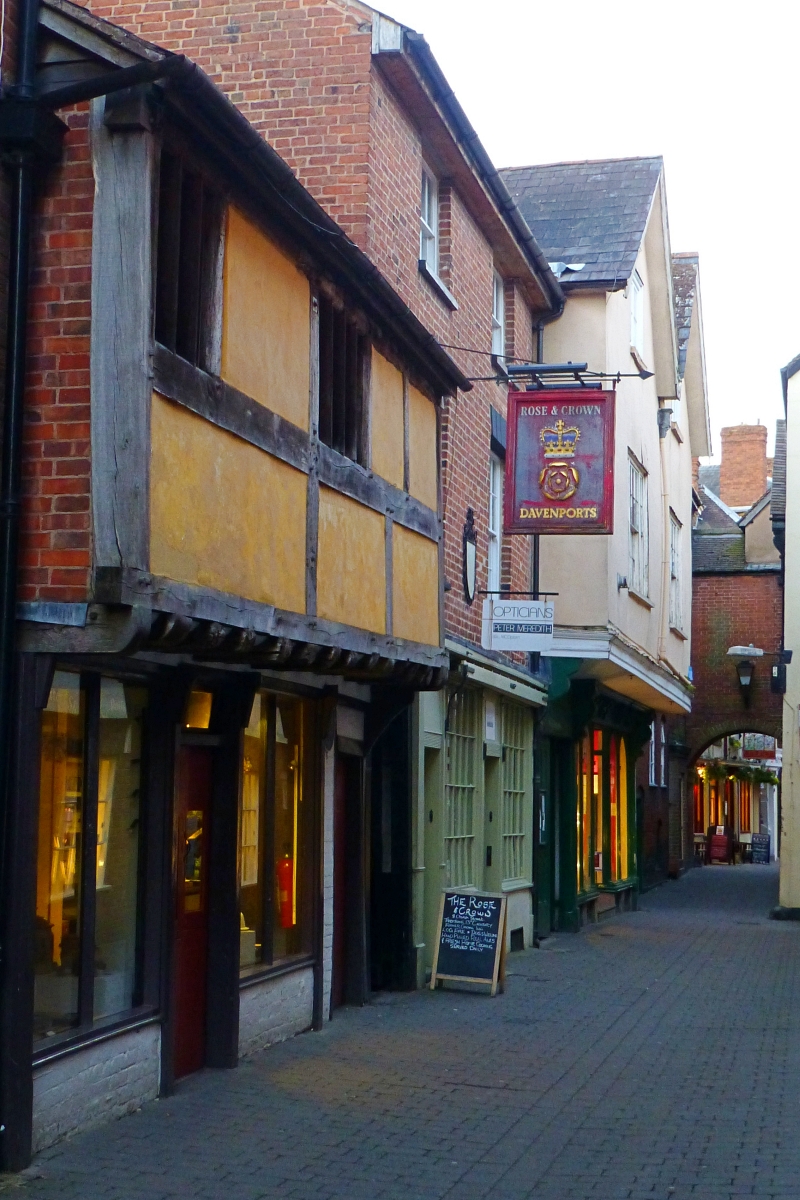 Medieval Street © essentially-england.com
Medieval Street © essentially-england.comSo let’s go and explore Ludlow…
Tour of Ludlow
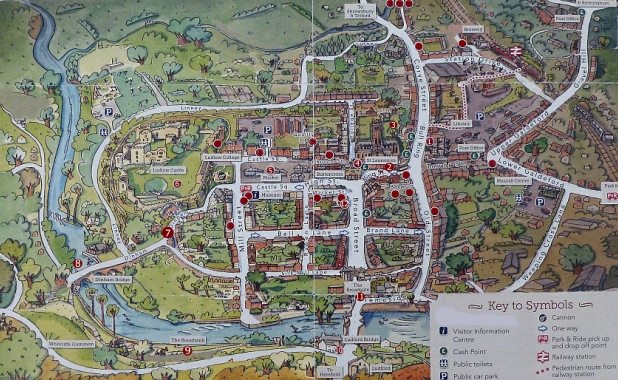 Town Map with Numbered Points to Follow on our Tour © essentially-england.com
Town Map with Numbered Points to Follow on our Tour © essentially-england.comAt essentially-england.com we enjoy good food and due to the growing ‘foody’ reputation of Ludlow I was researching where to stay to make it a special birthday weekend away. The internet came up with The Feathers Hotel and I thought that has just got to be where we stay. For some reason the planning didn’t work out and it took us around 10 years to get to Ludlow, but we knew where we were going to stay. Here…
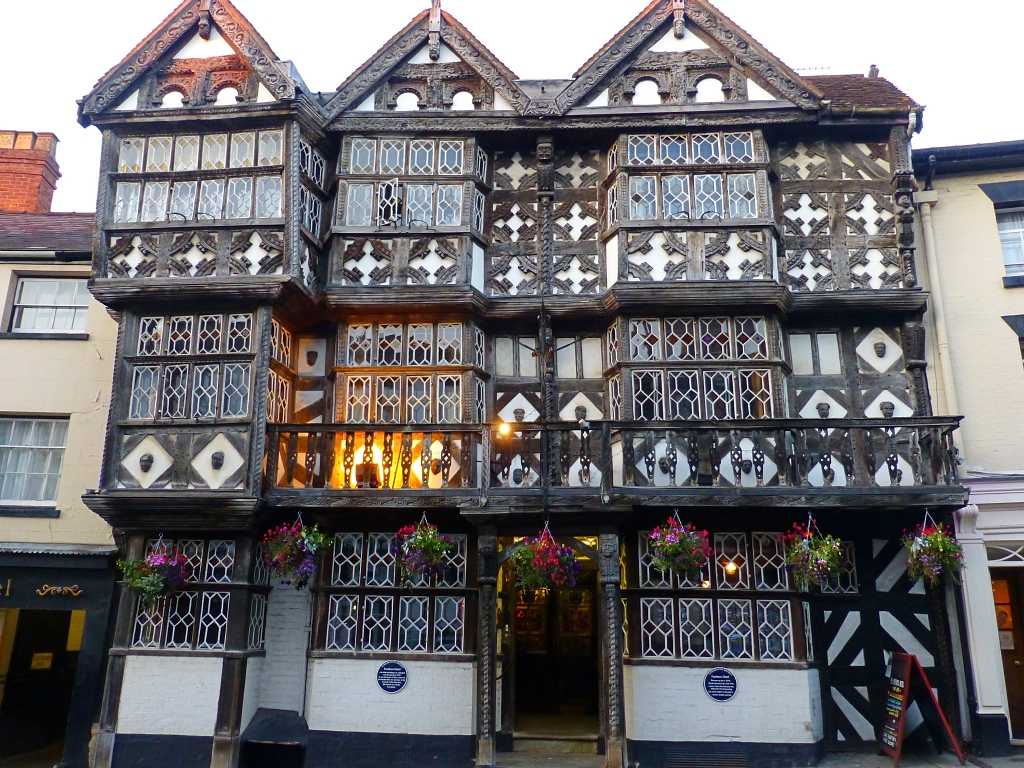 The Feathers Hotel © essentially-england.com
The Feathers Hotel © essentially-england.comI think you’ll understand why The Feathers Hotel was our must stay hotel. It is one of Ludlow’s, if not Shropshire’s most photographed buildings and this is where our ‘highlight’ tour starts.
Oh, just before we start I hope you don’t mind if we throw in a small plug for The Feathers Hotel. It’s a glorious place to stay with great food and drink, atmosphere, and service. Recently, the hotel changed owners and was closed for refurbishment. We hope you'll give it a try when it reopens its doors.
Now though, to the start of our tour.
(1) The Feathers Hotel
Local attorney James Rees built the striking Feathers Hotel on the Bull Ring as a private residence in 1619. The hotel takes its name from the ostrich feathers carved into the now much weathered timber frame and were probably a show support of the Prince of Wales who has three white ostrich feathers on his heraldic badge. Ludlow was a royalist town during the civil war and it is believed that the hotel garrisoned Royalist soldiers.
Due to the town's importance and prosperity it became a place for travellers and wealthy merchants to visit and so coaching inns appeared to cater for their needs. It was around 1670 when Rees’s son Thomas converted their home into an inn and in 1863 it became a hotel.
It hasn’t always been just a place to stay, but also a place to watch prize fights, cock fighting, and hold political meetings. In fact the balcony over looking the street has often been used as a platform from which to make political speeches, with the speaker then inviting people in for a drink to ‘buy’ their vote.
If you’re around on Boxing Day you may come across the annual ‘tug-of-war’ between the rival Feathers and Bull Hotels. It takes place across the street between the two establishments. The Bull Hotel is also a historic building whose courtyard was the site of ‘bull baiting’ after which the street Bull Ring was named.
(2) St. Laurence’s Church
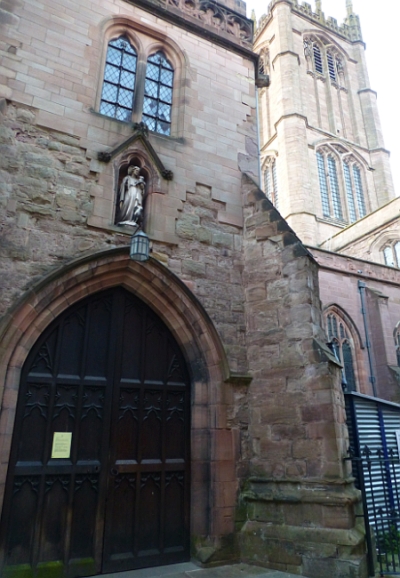 St. Laurence's Church Entrance © essentially-england.com
St. Laurence's Church Entrance © essentially-england.comThe first church on this site was built by the Normans when they started building the castle and developing the town around it. Apparently they chose this site for the church as there was already a pre-historic burial mound here. The church went through a rebuild in 1199 due to the increase in the town’s population. It wasn’t until the fifteenth century that the church underwent a number of extensions and rebuilding to demonstrate its wealth and status mainly gained from the wool trade. The alterations were completed around 1475 and since then only restoration and modernisation works, including the fitting of a glorious new organ in 1764, have been made.
Back in 1540 John Leland, the Kings agent, is quoted as saying “Very fayre and large and richly adorned and taken for the fairest in all these quarters.”
Today the church contains some beautiful stained glass windows and high status carved wooden furnishings. If you have the energy to climb the 135 foot tower you will gain fine panoramic views over the town and the surrounding countryside.
Outside in the church yard is a memorial by a cherry tree for A.E. Housman famous for his poetry including A Shropshire Lad.
(3) The Readers
House
Although the public cannot enter The Readers House it is well worth wandering around the edge of the church to see this historic building. This grade I listed home is from the sixteenth/seventeenth centuries. Since 1713 this house has been the official residency of the Reader of St. Laurence’s Church. The Reader, a clergy assistant, was an important role within the church as at the time many people could not read.
(4) The Buttercross
 The Buttercross © essentially-england.com
The Buttercross © essentially-england.comA buttercross is a cross that typically marks the point in an English medieval market town at which local producers sold dairy products. Later crosses were usually covered to help protect the products on sale.
The Ludlow Buttercross was built in 1746 and proudly stands at the junction of Broad Street, Kings Street, and High Street just off the market usually held in Castle Square.
On market days you will find a variety of traders selling their wares sheltering under its protective roof.
The upper floor of The Buttercross is home to the local museum.
(5) The Market
Ludlow is a medieval market town and the tradition has continued for hundreds of years. This is the heart of the planned Norman town, whose grid pattern street layout has survived to this day.
Nowaday a vibrant market is held in Castle Square most days of the week throughout the year. General markets are held Monday, Wednesday, Friday, and Saturday, with craft and local produce markets held frequently on Thursday’s and Sunday’s.
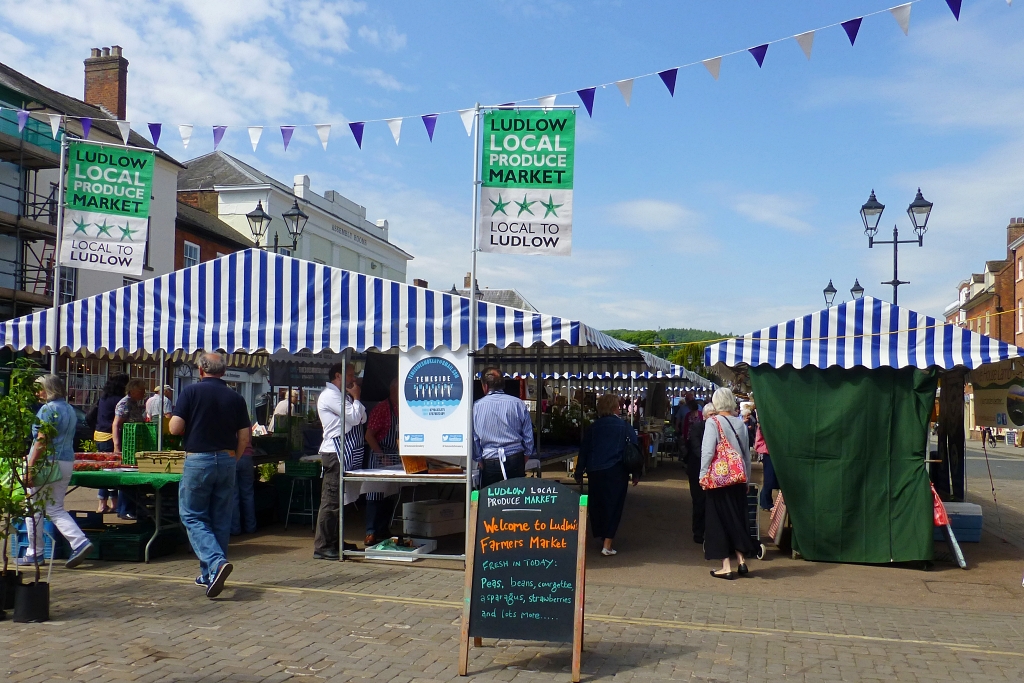 Market Day © essentially-england.com
Market Day © essentially-england.comWhilst in Castle Square you can’t help admiring some the beautiful architecture around you.
The Tudor Castle Lodge was once home to Catherine of Aragon while she was married to Prince Arthur. After Arthur died of tuberculosis she - of course - went on to marry his younger brother Henry VIII and local legend has it that her ghost haunts the lodge to this day.
And check out the grand Assembly Rooms built in 1840. This fine building now houses the tourist information office and is a local entertainment centre.
(6) Ludlow Castle
Construction of the castle was started by the Normans in the late eleventh century. The position of the castle was well thought out as it sat on top of the hill over looking the River Teme, and it was in use for hundreds of years in which time many modifications were made and many historic events occurred. If you would like to read more about the castles history then please follow this link to our dedicated page here.
(7) Dinham House
Walking down from the castle towards the River Teme you’ll pass many architecturally interesting buildings and will come upon Dinham House. This grade II listed grand red bricked Georgian home has an interesting history and an unusual current use. Let’s start with now as the reader may be following our tour whilst it’s raining and/or cold.
Dinham House is the rather posh home of Clearview wood burning stoves. They have eighteen wonderfully decorate rooms showcasing their products.
Therefore, if you need warming it may well be worth stepping inside.
During the Napoleonic Wars between England and France in the early 1800’s, Lucien Bonaparte, younger brother of Napoleon, was captured by the Royal Navy as he tried to escape to America. He and his family were confined in Dinham House during 1811 until they complained that it was too small and were moved away to Worcestershire. Once peace had been agreed they moved back to their home in 1814.
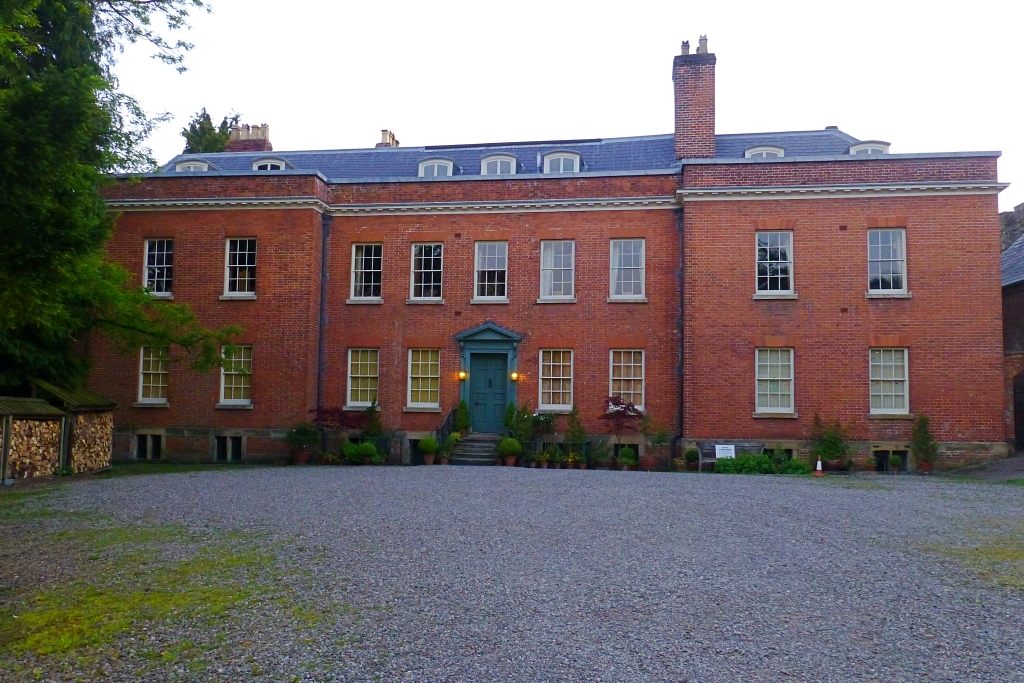 Dinham House © essentially-england.com
Dinham House © essentially-england.com
(8) Dinham Bridge
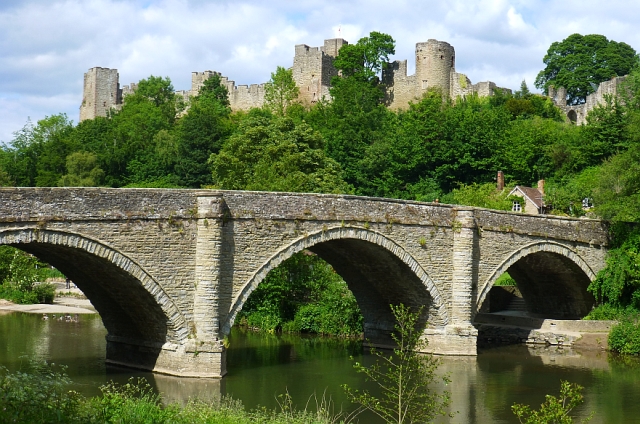 Beautiful View from the Bread Walk over Dinham Bridge to Ludlow Castle © essentially-england.com
Beautiful View from the Bread Walk over Dinham Bridge to Ludlow Castle © essentially-england.comOnce down by the riverside there is the peaceful Dinham millennium garden and a restored watermill. Crossing the 1823 built Dinham Bridge you get fine views of the castle and town up on the hill. If you’re visiting around November time you may be lucky enough to see the salmon jumping up over the weirs on their way to their spawning ground.
After crossing the bridge take the footpath on the left.
(9) The Bread Walk
This is a riverside promenade created by the Victorians. It gets it strange name from the way in which the workers who created it were paid – with bread. It is a bit rough in places, and will probably get muddy during wet periods. There are also uneven steps. However, the views are good!
If you would like to discover how the landscape around Ludlow was formed during the ice age, then the Bread Walk is part of a 3.5 mile walk that explains the action of the glaciers. A description can be found here.
(10) Ludford Bridge
The Bread Walk finishes close to the fifteenth century Ludford Bridge.
The bridge gave its name to a War of the Roses skirmish, the Battle of Ludford Bridge, on the 12th October 1459. From the bridge you get nice views along the river and up Broad Street in to Ludlow.
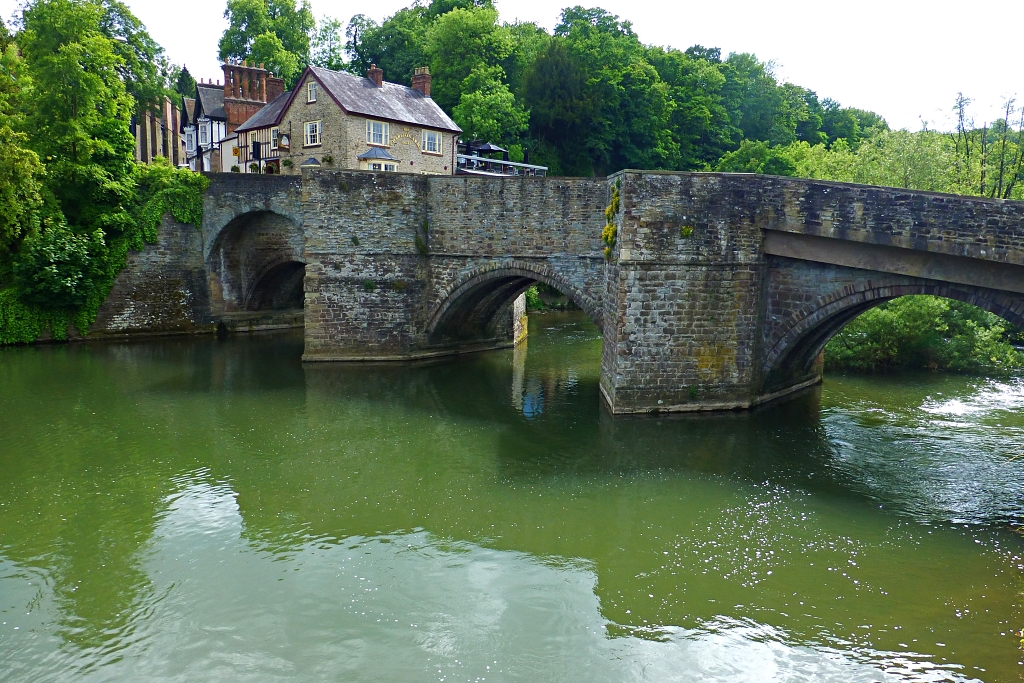 Ludford Bridge © essentially-england.com
Ludford Bridge © essentially-england.com
(11) Broadgate
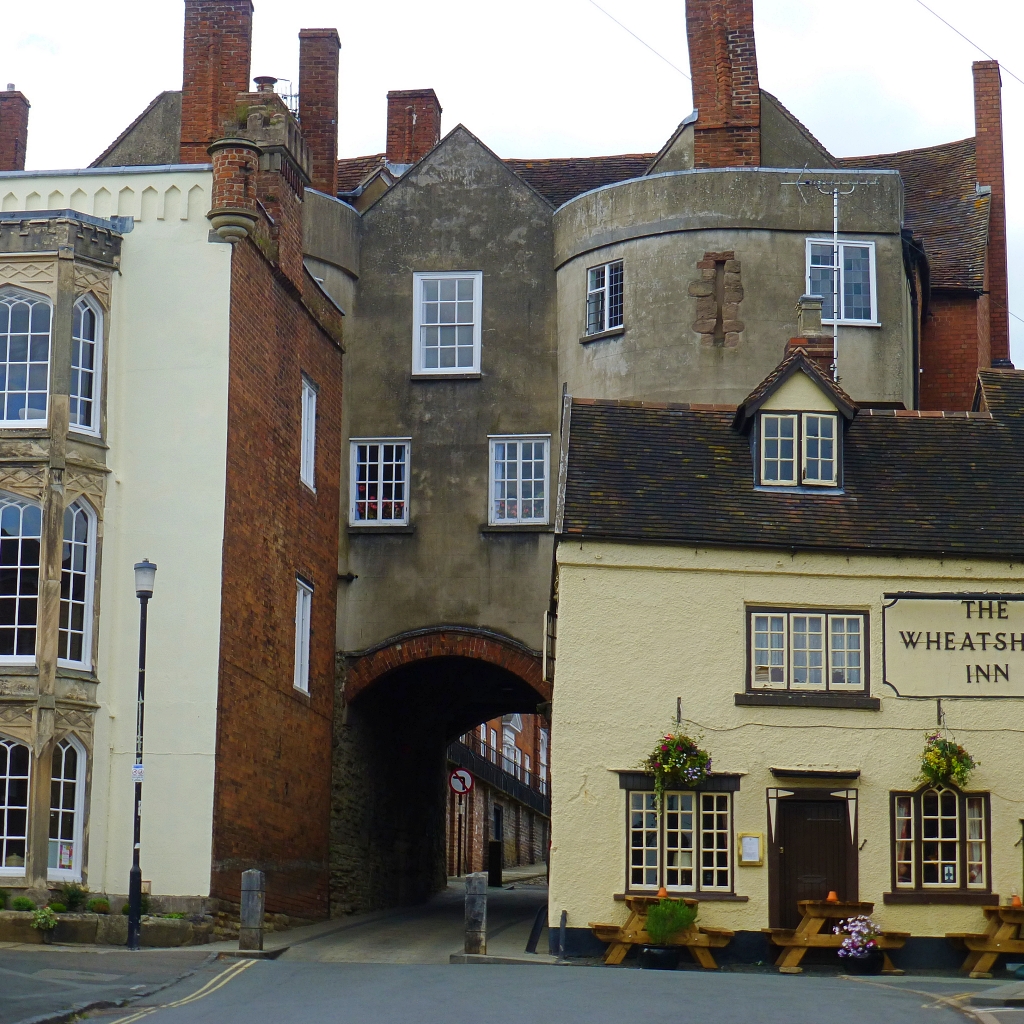 Broadgate © essentially-england.com
Broadgate © essentially-england.com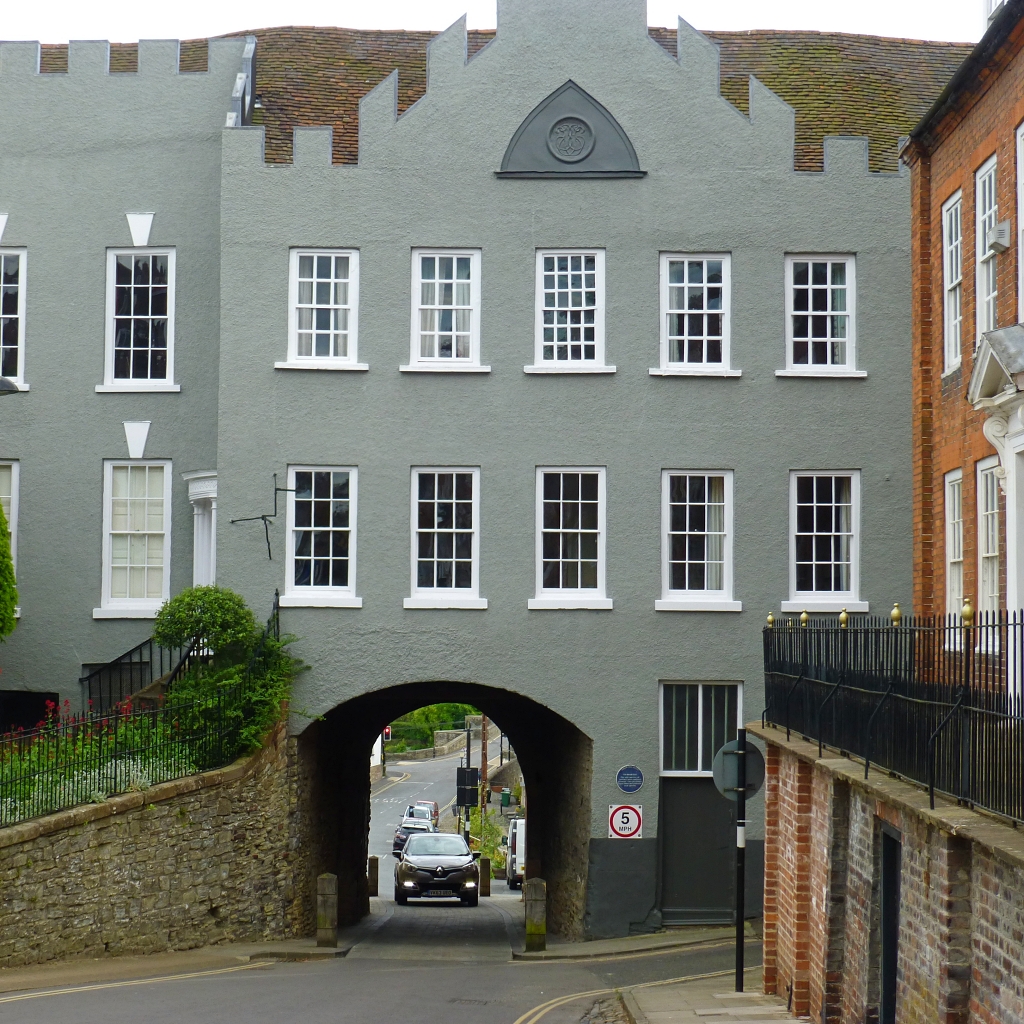 Broadgate © essentially-england.com
Broadgate © essentially-england.comWalking up Broad Street from Ludford Bridge you come to Broad Gate, the only surviving medieval gate way into Ludlow. When the town wall was constructed in 1233 four main gates and three postern, or smaller, gates allowed people in and out of the town. If you want to view parts of the town wall, then a good section still remains by the car park in Lower Mill Street. Turn left just after passing through Broadgate into Silk Mill Lane, continue ahead until another left turn into Lower Mill Street. Return to continue our walk.
(12) Broad Street
During the eighteenth and nineteenth centuries Ludlow was a fashionable town and visitors would come and stay for the ‘social season’. Rather than take lodgings, many built town houses and Broad Street has a good display of Georgian architecture.
It makes quite a dramatic walk up through the town gate past the Georgian styled homes, then past the Tudor half timbered shops to finish our tour by the Buttercross.
Naturally our tour only covers some of the many sights you can explore when visiting Ludlow. There are many other small streets with architecturally interesting buildings and historic stories which are well worth discovering at your leisure…
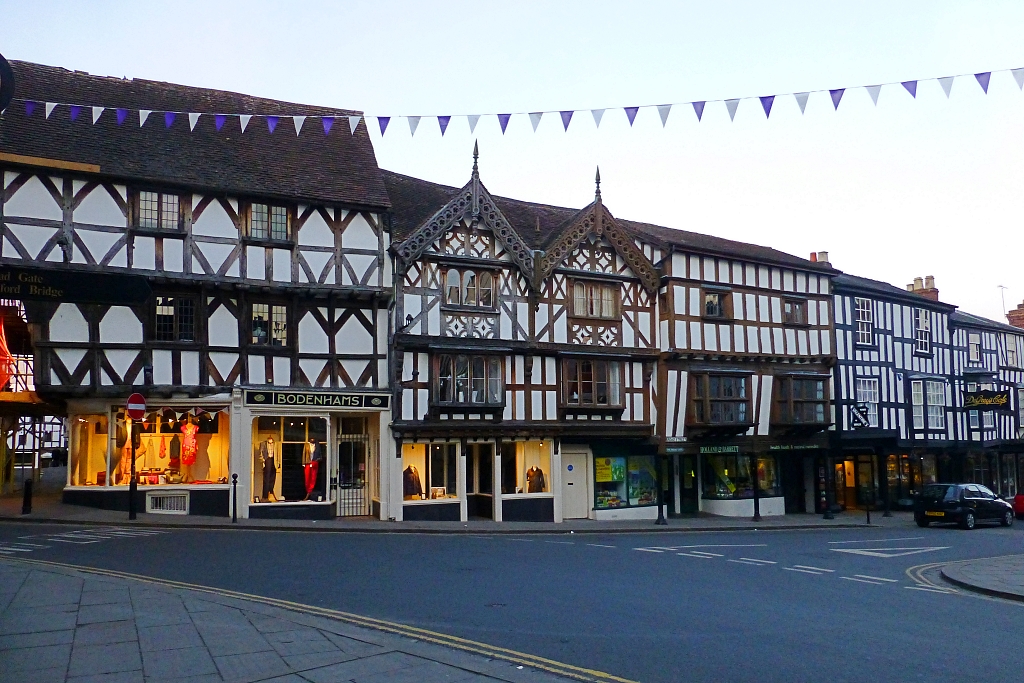 Top of Broad Street © essentially-england.com
Top of Broad Street © essentially-england.comAre You Planning a Trip to Shropshire?
Shropshire is a marvellous place for history and food lovers! There's so much to see and do and taste, that you'll need more than just a short visit. If food is your thing, head to Ludlow and start exploring from there. For history lovers, Shrewsbury makes a great base with many historical sites in very easy reach.
Where You Could Stay
To see more self-catering cottages in Shropshire click here or check out holiday cottages in other parts of England by clicking here
Or, if you would prefer, here are some hotels in Shropshire.
What You Could See and Do
Here are a few places that should go on your must-see list:
- Wroxeter Roman City
- Shrewsbury & Shrewsbury Abbey
- Attingham Park
- Lilleshaw Abbey
- Offa's Dyke
- Cantlop Bridge
- Ironbridge Gorge, the Iron Bridge & Broseley Jitties
- Coalbrookdale Iron Museum, Jackfield Tile Museum, and Coalport China Museum
- Ludlow Castle
- Stokesay Castle
- Bridgnorth
Click here for a great list of things to do in Shropshire.
